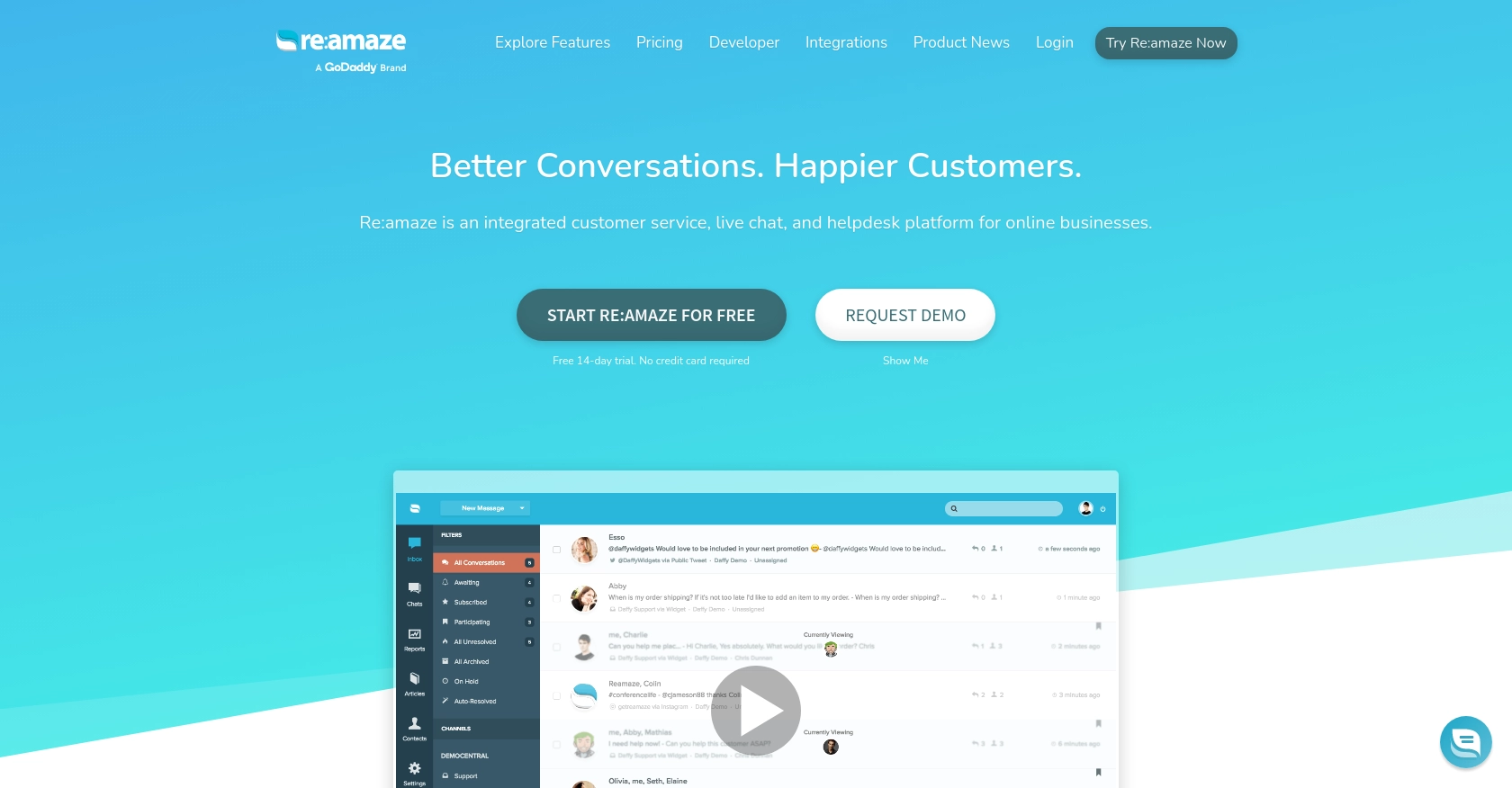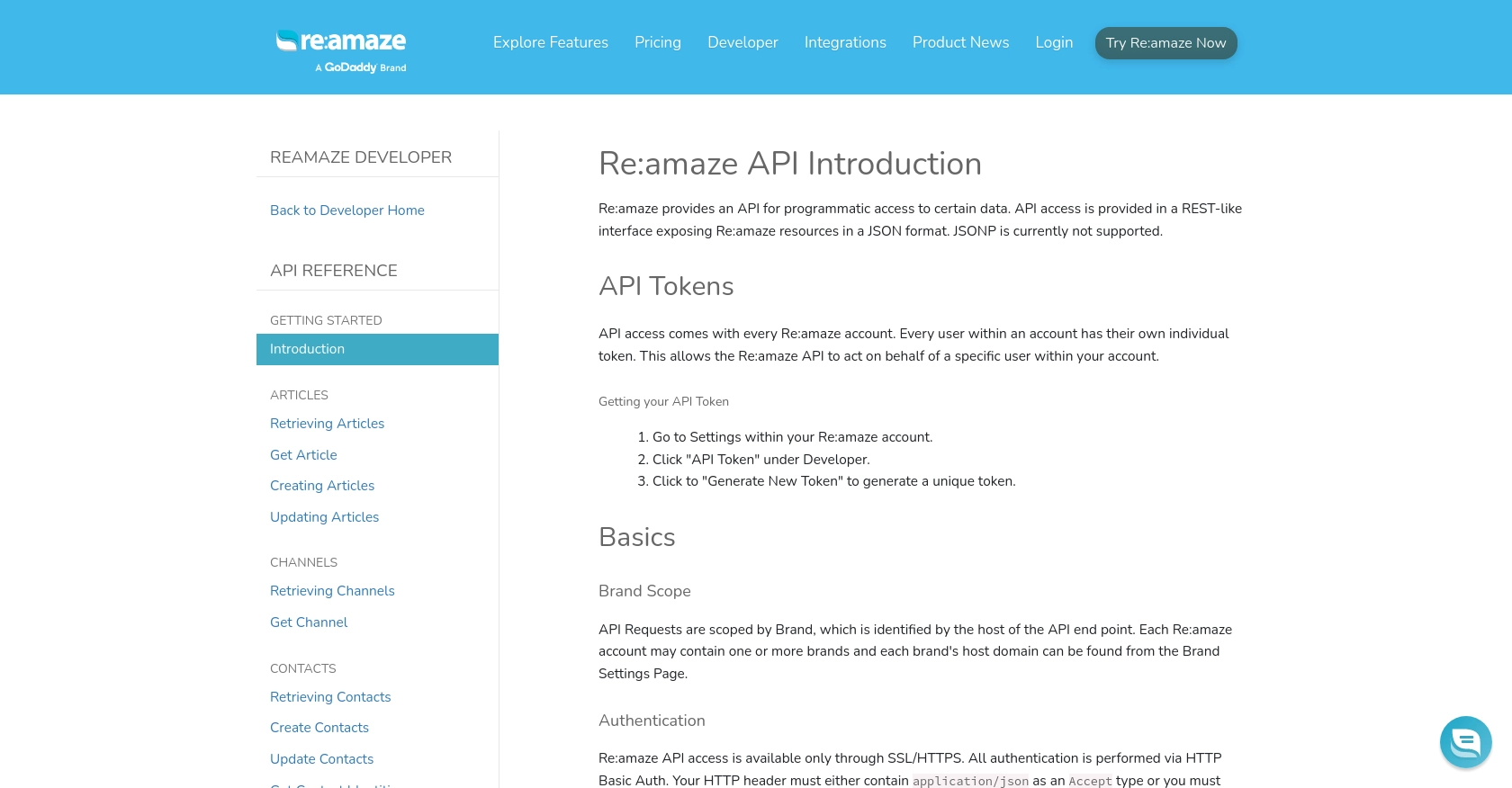How to Get Contacts with the Re:amaze API in PHP

Introduction to Re:amaze API Integration
Re:amaze is a versatile customer support platform that offers a unified inbox for managing customer interactions across various channels. It provides tools for live chat, automated messaging, and customer engagement, making it a popular choice for businesses aiming to enhance their customer service experience.
Integrating with the Re:amaze API allows developers to programmatically access and manage customer data, such as contacts, directly from their applications. For example, you might want to retrieve contact information to personalize customer interactions or automate support workflows, thereby improving efficiency and customer satisfaction.
Setting Up Your Re:amaze Test Account for API Integration
Before you can start interacting with the Re:amaze API, you'll need to set up a test account. This will allow you to safely experiment with API calls without affecting live data. Re:amaze offers a straightforward process to get started with their platform.
Creating a Free Re:amaze Account
To begin, you'll need to create a free Re:amaze account. Follow these steps:
- Visit the Re:amaze website and click on "Try Re:amaze Now" to sign up.
- Fill out the registration form with your details or use the option to sign up with Google or Microsoft.
- Once registered, you'll have access to the Re:amaze dashboard where you can manage your account settings.
Generating Your Re:amaze API Token
To authenticate API requests, you'll need an API token. Here's how to generate one:
- Log in to your Re:amaze account and navigate to the "Settings" section.
- Under "Developer," click on "API Token."
- Select "Generate New Token" to create a unique API token for your account.
- Make sure to store this token securely, as it will be used to authenticate your API requests.
Understanding Re:amaze API Authentication
Re:amaze uses HTTP Basic Auth for API authentication. This requires your login email and the API token. Ensure all requests are made over HTTPS to maintain security. Here's an example of setting up a request:
$ch = curl_init();
curl_setopt($ch, CURLOPT_URL, "https://{brand}.reamaze.io/api/v1/contacts");
curl_setopt($ch, CURLOPT_RETURNTRANSFER, 1);
curl_setopt($ch, CURLOPT_HTTPHEADER, array('Accept: application/json'));
curl_setopt($ch, CURLOPT_USERPWD, "{login-email}:{api-token}");
$response = curl_exec($ch);
curl_close($ch);
Replace {brand}, {login-email}, and {api-token} with your specific details.
With your Re:amaze account and API token ready, you're all set to start making API calls to retrieve contacts and other data.

sbb-itb-96038d7
Making API Calls to Retrieve Contacts with Re:amaze in PHP
Now that you have your Re:amaze account and API token set up, it's time to make API calls to retrieve contacts. In this section, we'll guide you through the process of using PHP to interact with the Re:amaze API.
Prerequisites for Using PHP with Re:amaze API
Before proceeding, ensure you have the following:
- PHP 7.4 or higher installed on your machine.
- cURL extension enabled in your PHP configuration.
Installing Necessary PHP Dependencies
Ensure that the cURL extension is enabled in your PHP setup. You can check this by looking at your php.ini file or running phpinfo() to verify.
Writing PHP Code to Retrieve Contacts from Re:amaze
Let's create a PHP script to make a GET request to the Re:amaze API and retrieve contacts. Follow the steps below:
<?php
// Initialize cURL session
$ch = curl_init();
// Set the API endpoint URL
$brand = 'your_brand';
$url = "https://{$brand}.reamaze.io/api/v1/contacts";
// Set cURL options
curl_setopt($ch, CURLOPT_URL, $url);
curl_setopt($ch, CURLOPT_RETURNTRANSFER, true);
curl_setopt($ch, CURLOPT_HTTPHEADER, array('Accept: application/json'));
curl_setopt($ch, CURLOPT_USERPWD, 'your_login_email:your_api_token');
// Execute the request
$response = curl_exec($ch);
// Check for errors
if (curl_errno($ch)) {
echo 'Request Error:' . curl_error($ch);
} else {
// Decode the JSON response
$contacts = json_decode($response, true);
// Display the contacts
foreach ($contacts['contacts'] as $contact) {
echo "Name: " . $contact['name'] . "<br>";
echo "Email: " . $contact['email'] . "<br>";
echo "Friendly Name: " . $contact['friendly_name'] . "<br><br>";
}
}
// Close the cURL session
curl_close($ch);
?>
Replace your_brand, your_login_email, and your_api_token with your specific Re:amaze details.
Understanding the API Response
The response from the Re:amaze API will include contact details such as name, email, and friendly name. You can iterate through the contacts and display them as shown in the code above.
Handling Errors and Verifying API Requests
It's crucial to handle errors gracefully. If the API call fails, cURL will return an error message. Ensure you check for errors and handle them appropriately. Additionally, verify the success of your request by checking the returned data against your Re:amaze test account.
For more details on the API, refer to the Re:amaze API documentation.

Conclusion and Best Practices for Using Re:amaze API in PHP
Integrating with the Re:amaze API using PHP allows developers to efficiently manage customer interactions and data. By retrieving contacts programmatically, you can enhance your customer service workflows and personalize interactions, leading to improved customer satisfaction.
Best Practices for Secure and Efficient API Integration
- Secure Storage of API Credentials: Always store your API token and login credentials securely. Consider using environment variables or secure vaults to protect sensitive information.
- Handle Rate Limiting: Be mindful of the Re:amaze API's rate limits. Implement logic to handle HTTP 429 responses by retrying requests after a delay. This ensures compliance with API usage policies and maintains service quality.
- Data Standardization: When retrieving and storing contact data, ensure consistency in data formats. This will facilitate easier integration with other systems and improve data reliability.
- Error Handling: Implement robust error handling to manage API call failures gracefully. Log errors for troubleshooting and provide user-friendly messages where applicable.
Streamline Your Integrations with Endgrate
While integrating with the Re:amaze API directly is a powerful approach, managing multiple integrations can become complex and time-consuming. Endgrate offers a unified API solution that simplifies integration processes across various platforms, including Re:amaze.
By leveraging Endgrate, you can focus on your core product development while outsourcing the intricacies of integration management. Build once for each use case and enjoy an intuitive integration experience for your customers.
Explore how Endgrate can transform your integration strategy by visiting Endgrate's website today.
Read More
Ready to get started?
